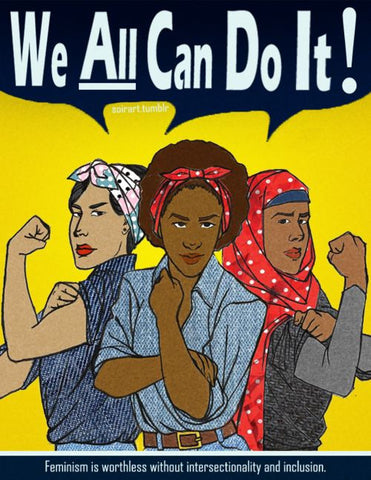The Rising Tide: Waves of Feminism

First Wave
With no access to higher education, no property rights, and no financial autonomy, Sarah Moore Grimké wrote "Letters on the Equality of the Sexes" in 1838 after having been criticized for her bold speech in favor of abolition. Inspired by the Suffragettes of Europe, American suffragists like Grimké first organized in 1848 at the Seneca Falls Convention. Three hundred men and women rallied together for equality. Eight days after the 19th Amendment was ratified, the first ten million (white) women registered to vote.

Second Wave
The rise of the second wave in the 1960s was defined by the demand for equal rights. Activist and National Organization for Women (NOW) founder Betty Friedan published her seminal work The Feminine Mystique in 1963, which many believe to have sparked the Second Wave. In her book, Friedan encouraged women to search for fulfillment beyond marriage and motherhood, by suggesting that happiness could also be found through meaningful, challenging work outside of the home. From the early 60s to mid-90s, the battle continued to escalate, and second-wave feminists took on issues concerning equal pay and opportunity. Bras were burned, beauty pageants were protested, class-action lawsuits were filed, and “I am Woman” — which became the anthem of the burgeoning movement — hit number 1 on the Billboard charts, the same year Gloria Steinem launched her infamous Ms. magazine (1973).

Third Wave
The third wave began in the mid-90s, and was concerned most with redefining what it meant to actually be a “feminist”. Riot grrrl, an underground feminist punk movement, is said to have sparked the third wave — raising awareness, and addressing issues like rape, domestic abuse, sexuality, racism, patriarchy, and female empowerment. Some believe that this wave lacked cohesion, and failed to define a clear mission, which may have contributed to a loss of momentum. Instead of shifting to unite with others, cliques and factions formed within the movement. Shifting expectations and nebulous definitions of what it meant to “be a strong woman” hadn’t yet been clearly defined, and perhaps that scared us. The housewife scam had been revealed, but we still grappled with gender expectations. Some say we became competitive about our differences, rather than operating in solidarity, or building on the foundation that had been laid for us during the second wave.
 The fourth wave of feminism is being defined as we speak, but we think we have a hunch about where it’s headed. Largely themed by the notion of widespread collaboration vs. competition, this most recent wave stands to become a tidal wave of massive proportions. Armed with the power of technology — that computer in our pockets that our mothers, grandmothers, and great-grandmothers lacked — the fourth wave aims to activate the entire feminist community, not only women, in total intersectionality and inclusion. Fourth wave
The fourth wave of feminism is being defined as we speak, but we think we have a hunch about where it’s headed. Largely themed by the notion of widespread collaboration vs. competition, this most recent wave stands to become a tidal wave of massive proportions. Armed with the power of technology — that computer in our pockets that our mothers, grandmothers, and great-grandmothers lacked — the fourth wave aims to activate the entire feminist community, not only women, in total intersectionality and inclusion. Fourth wave
Sources:
https://mentalfloss.com/article/67422/19-facts-about-19th-amendment













